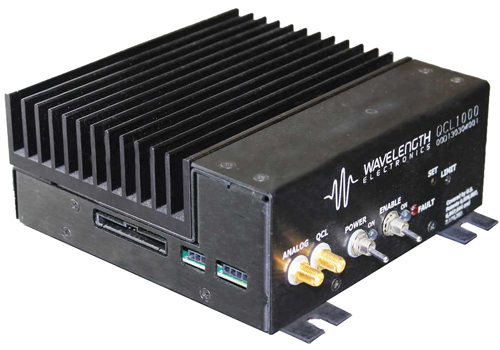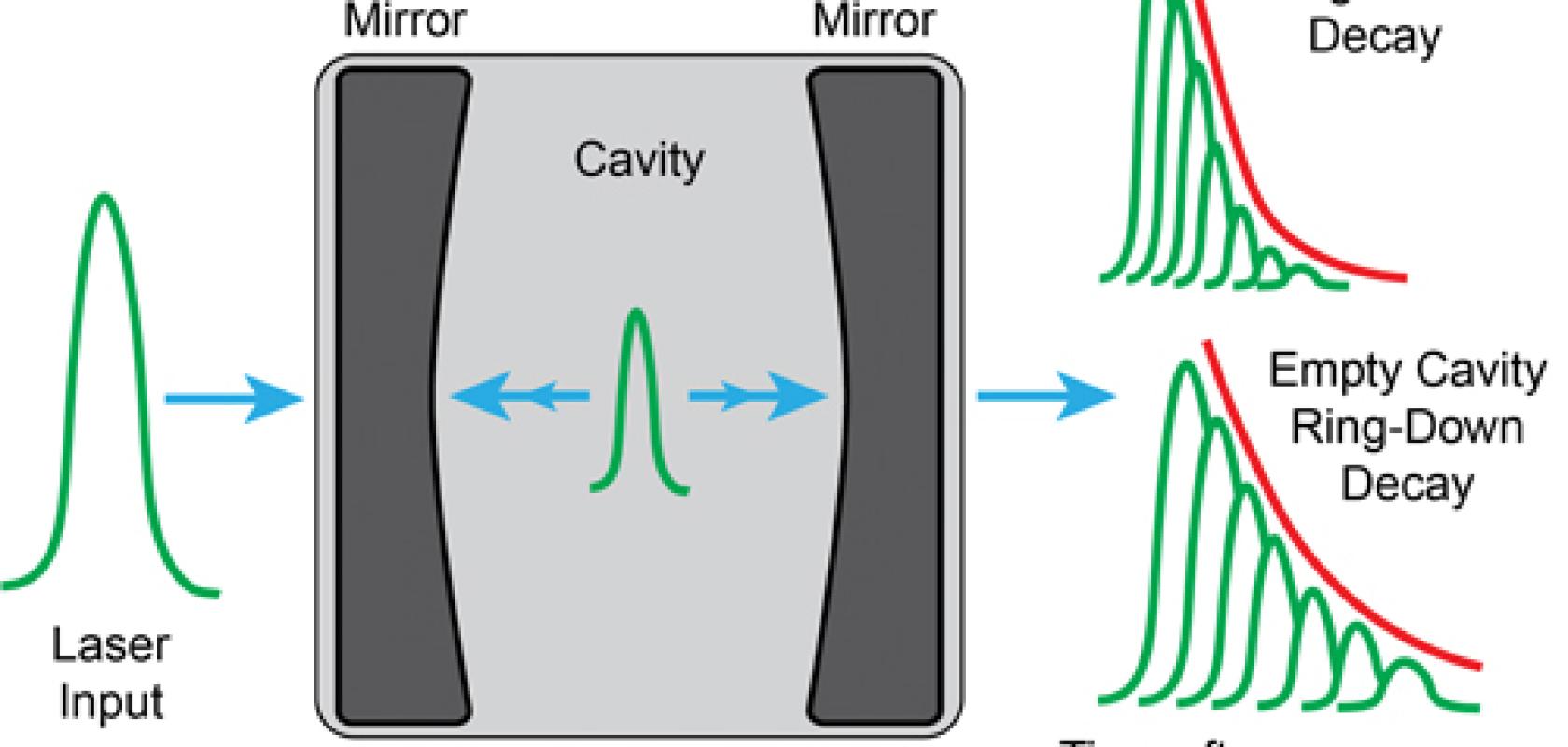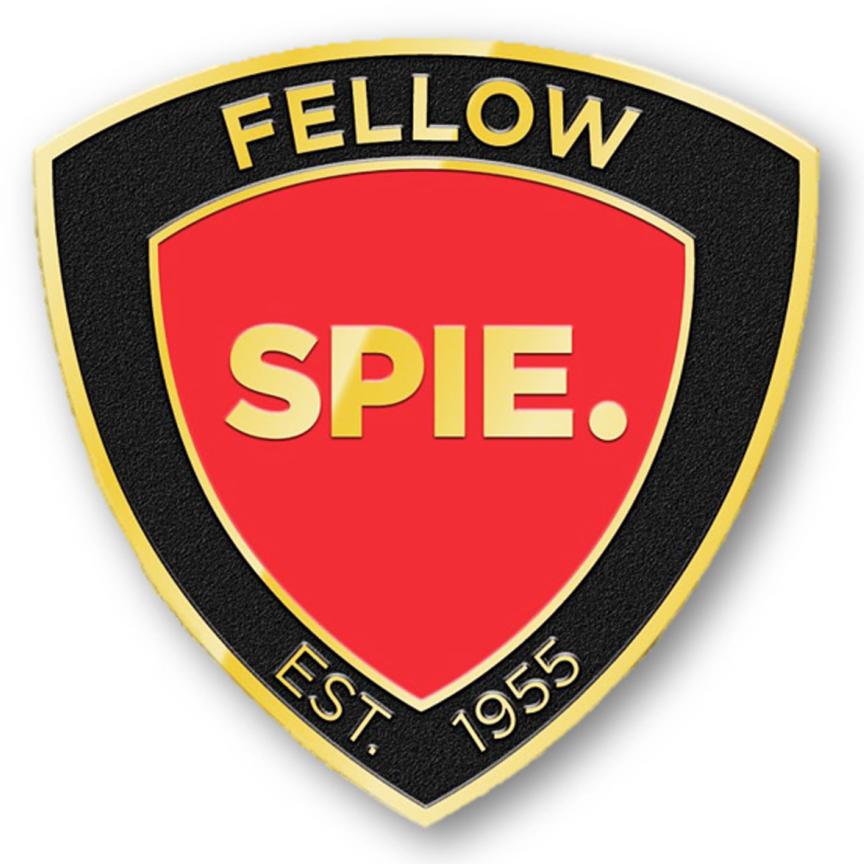Researchers at the VTT Technical Research Centre of Finland have developed optical interruption of a mid-infrared quantum cascade laser, which could cut costs of a sensitive type of spectroscopy
Cavity ring-down spectroscopy (CRDS) is one of the most sensitive types available. It can detect a wide variety of molecules at extremely low levels of concentration, making it suitable for a range of applications from monitoring air quality and atmospheric gases to the detection of harmful substances and medical diagnostics.
Until recently the widespread adoption of the technology has been limited by the costs of both the components and the complexity of the setup. However, the development of a room temperature quantum cascade laser (QCL), and the fall in price of mid-infrared lasers, drivers and optics, means that the scope for the application of CRDS has grown significantly.
There have also been important innovations in the setup of CRDS.
As a new white paper from Wavelength Electronics explains, the recently-developed method of optical interruption of a QCL for CRDS using a near-infrared laser diode could drive down the costs even further, and most importantly, without impacting the sensitivity or reliability of the results.
CRDS is based on the time it takes for laser light to decay in a high-finesse optical cavity after the light injection has stopped. The laser light is reflected between two high reflectivity concave mirrors with a cavity between them, and when enough light is detected in the cavity, the laser is interrupted, and a ring-down event is started. No mirror reflects light perfectly, and when the light into the cavity is interrupted, the decay of the light leaking can be measured with a detector.
The speed of the decay is accelerated according to the molecules trapped in the cavity, and by comparing the ring-down time with the ring-down time of an empty cavity the absorption coefficient can be inferred, with different molecules having unique absorption coefficients and spectra. The mid-infrared light enabled by the highly tailorable QCL, also known as the fingerprint region of the infrared spectrum, makes CRDS particularly sensitive as it consists of many of the best absorption transitions of some of the most important molecules. It provides a cleaner spectrum and more distinct peaks and troughs for the absorbed sample.

QCL1000 OEM QCL Driver
CRDS is also particularly sensitive thanks to the thousands of trips a pulse of light may make between the mirrors during the decay process. This can equate to the light travelling a few kilometres in the multi-pass cavity before it decays, with the long distance travelled in the sample gas ensuring better measurement precision.
CRDS measurements are independent of the stability of the laser itself, because the laser is interrupted. This makes the interruption of the laser one of the most important aspects of the CRDS setup. For the CRDS to be as sensitive and reliable as possible it is necessary to have a quick and clean interruption of the laser.
Jeremiah Hashley, technical writer at Wavelength Electronics, explained its importance: ‘The interruption of the laser is one of the most critical parts of the spectroscopy. You want the laser to be interrupted quickly, so that the ring-down decay can start almost immediately after you’ve started the interruption, and then get a clean exponential decay of that signal. The better your interruption is, the more sensitive your spectroscopy is.’
A poor interruption may lead to either poor detection with oscillations in the decay signal, or even failure to measure the ring-down event at all.
While there are several existing methods for interrupting the laser, each has its own particular disadvantages: fast current modulation of the laser can reduce the light build up in the cavity, creating a poor signal-to-noise ratio and decreasing the sensitivity of the spectrometer; acousto-optic modulators are expensive in the mid-infrared range, and add complexity to the apparatus; and a fast current step requires a fast QCL driver, which is very effective in interrupting the laser, but can also be expensive.
What is required is a way of interrupting the QCL without the excessive additional cost or loss of precision. This is what researchers from Finland have developed with a new design for the optical interruption of a QCL laser in CRDS.
Researchers from the VTT Technical Research Centre in Finland have successfully demonstrated that a fast interruption can be achieved without loss of performance by using a near-infrared laser diode to modulate the QCL on cavity build-up. The near infrared emission quickly interrupts the QCL into the cavity, with a small frequency shift sufficient to interrupt the light in a high finesse cavity.
The results of the optical interruption were found to be comparable with typical current modulation methods of electrical interruptions, albeit at a lower cost, requiring reduced bandwidths from the QCL driver, and increasing the speed with which the QCL driver returns to the original frequency. The reduced bandwidth required of the QCL driver has the potential to reduce the costs and complexity of CRDS, while the potential increased rate of ring-down events means that they can accurately be repeated.
Stability is essential for the proper operation of the lasers and the repeatability of the results. In the Finnish experiment the necessary precision control was provided by Wavelength Electronics’ laser drivers: the LDD200 laser diode driver was used to drive current to the near infrared laser diode, and the QCL1000 OEM driver was used to drive the current to the mid-infrared QCL. Hashley described the contribution he thought that Wavelength Electronics’ drivers had made to the experiment:
‘Wavelength Electronics’ laser drivers provide low noise and stable current to the lasers at a relatively low cost. These are high performance drivers with very low noise, and noise is critical when using any kind of spectroscopy setup,’ Hashley said. ‘The less noise you have the better the signal will be, the cleaner it will be, and the easier it will be to detect.’
Optical interruption is undoubtedly an exciting area of development in CRDS, and an important step in the drive to making CRDS practical and affordable wherever there are potential applications.
But, as Hashley pointed out, this is an ongoing process: ‘Using optical interruption allows for quick and clean ring-down events to make the CRDS experiment successful with good detection rates and repeatable results. Reducing the cost and simplifying the experimental setup are driving factors in future research to make this method useful in a variety of applications.’
As the CRDS apparatus is simplified and the costs lowered, without the loss of sensitivity or reliability, an increasing range of applications starts to open up in a wide variety of settings. It seems highly likely therefore, that CRDS will crop up more often in the future, whether with breath analysis in medical settings, greenhouse gases in the stratosphere, or to help counter terrorism.
More information
Read about this application in more depth by downloading the following white paper: Optical Interruption of Quantum Cascade Laser for Cavity Ring- Down Spectroscopy


